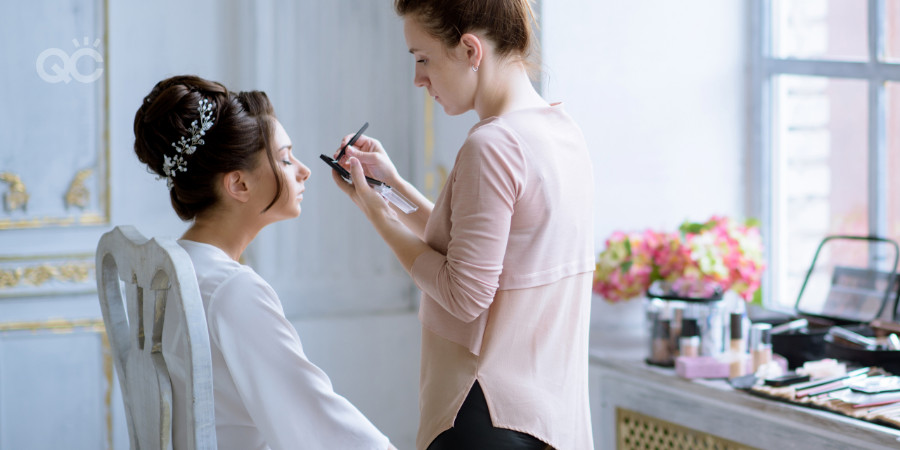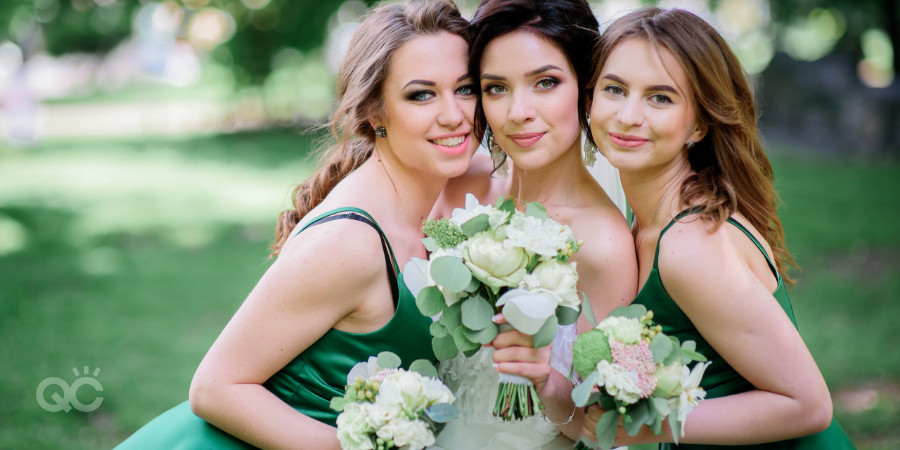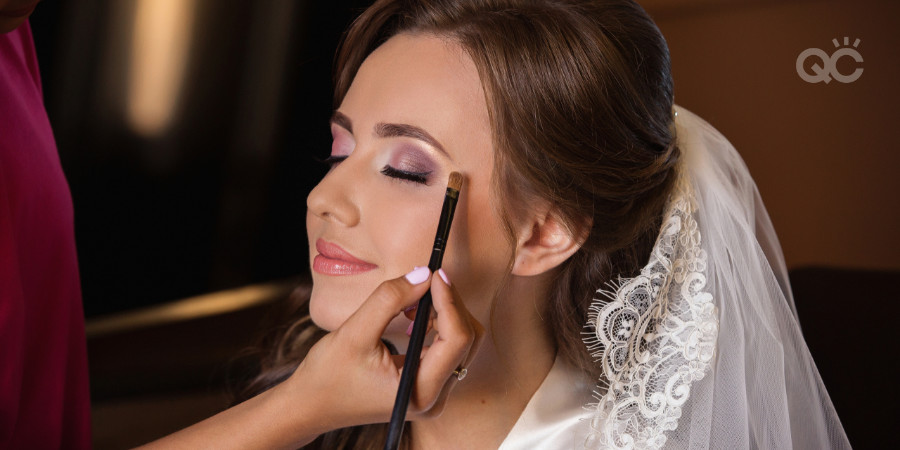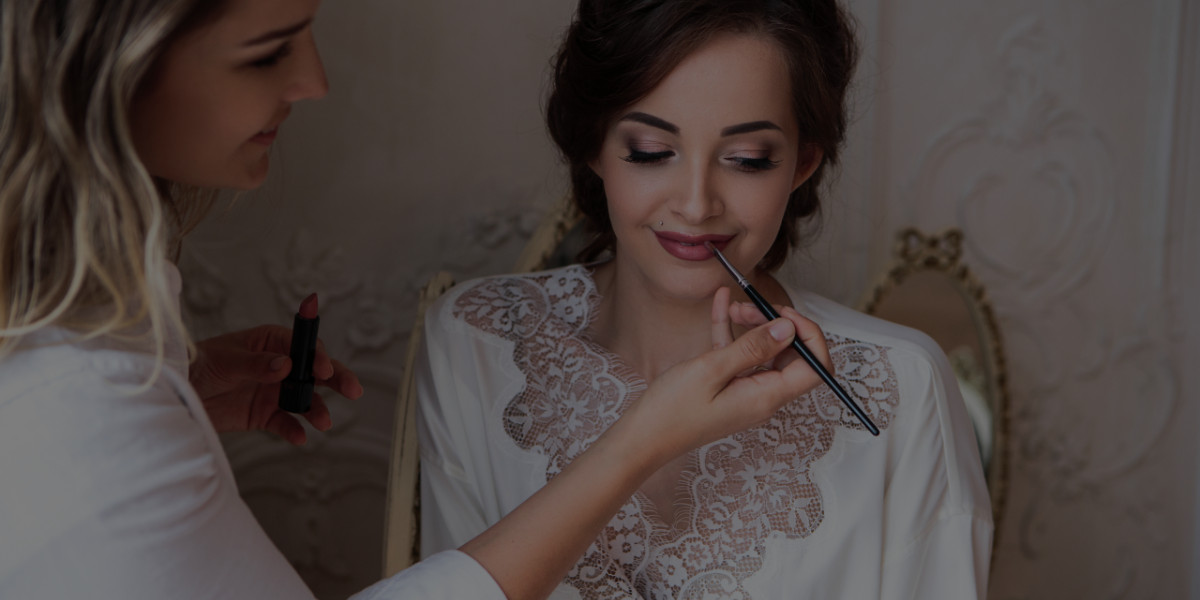Your bridal makeup course probably taught you everything you needed to know about getting bridal clients and applying wedding makeup. But did you learn how to price yourself competitively? Whether you’ve gotten professional makeup training, or are a self-taught makeup artist through and through, you’re probably struggling with how to evaluate your worth as an artist.
Not to fear! We’ve outlined the differences between flat rate and hourly service rates. Evaluate the differences carefully, and see which one makes the most sense for your business!

Factors That Affect Pricing
Even if you decide to charge an hourly rate, how much should you charge per hour to make it worth your while? Well, it depends on a variety of factors. Give each of the following some thought before deciding how to price your bridal makeup services:
- Years of experience: Even if you have work experience in other industries, you may be at an entry level in the bridal industry. Adjust your prices according to experience in this
- Level of professional education: Have you taken a bridal makeup course? Have you taken any relevant workshops to advance your skills (ex. An airbrush makeup workshop?)
- Additional qualifications: Do you have any awards or achievements in special occasion makeup?
- Local industry: If you’re a makeup artist in New York City, you’re probably charging more compared to an artist from a small town. Research your competitors and see how much they’re charging for guidance.
- Service time: How long and how many services will you providing to your client? This includes the consultation, any time needed for adjustments, travel time, day-of appointment time, and any extra time agreed upon for touch-ups.
- Number of people: As a bridal makeup artist, you’ll sometimes only work for the bride. Other times, the bridesmaids and the mother of the bride will also be part of the deal.
- Assistants: If the wedding party is large, you may need to hire and bring along a makeup assistant.
- Seasonal and time logistics: Is it wedding season? Is it a Saturday? You may be able to charge more due to expected demand during peak seasons.
- Products used: High-end or luxury products used for the appointment cost more than drugstore brands. You can also charge more for airbrush makeup services as it’s a specialization.
- Add-ons: Optional services, such as false lashes, cost more to apply.

Flat Rate Pricing
Flat-rate service pricing is when you, the artist, offer your services at a pre-determined rate. Your rate is determined by considering all the factors above. Your rate must be the same for every client—it shouldn’t change depending on who enlists your services!
A typical novice artist with professional makeup training would charge $100.00 USD for the bride. Additional faces would cost less, around $75 per bridesmaid. Again, the price increases as the artist gains experience! In addition, a-la-carte services such as false lashes or a small makeup touch-up kit can be assigned fixed fees and layered on top of the flat fee.
If you choose to go this route, we suggest offering it in combination with hourly pricing (discussed below). This is to cover you in case you unexpectedly have to spend additional hours on-site. Expect the unexpected!
Hourly Pricing
This pricing structure is highly flexible. By outline your hourly rate and billable hours, you’ll always be compensated for your time. This does not mean that you don’t need to quote a price to your client! During your consultation, you’ll discuss the extent of the services you will offer based on your client’s needs. Provide them with an educated estimate of how much it’ll all cost. But, also ensure that you discuss the billable hours and the hourly rate for any additional time accrued. Be upfront about when your additional time starts!

Combination & Service Discounts
For the wedding industry, most artists work with a combination of the two structures. You can even get creative with how you package your rates. For example, you can incentivize your bridal clients with group discounts. If her bridesmaids and other key guests (ex. mother of the bride) opt for your services, you can offer them a discount on the total cost.
Your packaged rates should provide clients with a set number of hours you’ll be doing makeup, along with a set number of faces. Don’t underestimate how long it’ll take per face! Even if you’ve timed yourself breaking records on full-face transformations, give yourself an extra 10-20 minutes per face. This is enough time to correct any mistake!
The Makeup Contract
Ensure that your clients never walk out of a consultation without a good idea of how much they’re expected to pay. Nobody likes surprises—especially those they can’t afford!
When drafting your makeup contract, outline everything that was discussed at the consultation. The contract should include: details of the services you’ll provide, event and appointment logistics, your business policies, and the service charge amounts. You’ll also outline the deposit amount your client must pay to secure the booking. Make sure both parties get a signed copy of the contract for reference.
